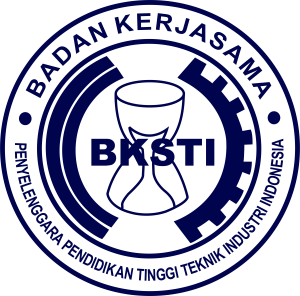ANALISIS PERBANDINGAN ANTARA PUPUK ORGANIK URIN KELINCI DENGAN PUPUK NON-ORGANIK (NPK MUTIARA) TERHADAP PENDAPATAN DAN HASIL PANEN WORTEL DI DESA HANAKAU KABUPATEN LAMPUNG BARAT
DOI:
https://doi.org/10.37090/indstrk.v3i1.126Abstract
Hanakau Village, Sukau District, West Lampung Regency is a village where most people depend on agriculture for their livelihoods. The main commodities grown in Hanakau Village are carrots, cabbage, sweet potatoes, and other types of vegetables such as mustard greens, tomatoes, peanuts, beans and chillies. Farmers there need chemical fertilizers, manure or animal dung in large quantities to fertilize the growth of vegetable crops. The use of chemical fertilizers in the village of Hanakau on agricultural land has continuously had a negative impact on the soil and the environment. Animals that are kept and used for manure in Hanakau Village are goats and rabbits. Rabbit urine has the highest nitrogen content compared to manure and urine of other livestock such as horses, buffaloes, cows, and sheep, because it is customary to never drink water and only consume green leaves and carrots. This study aims to see how far the difference between carrots and what are the economic benefits of using organic fertilizer (rabbit urine) and inorganic fertilizer (NPK Mutiara). The parameters observed in this study were plant height, number of leaf segments, measuring the diameter of the base of carrot tubers ready for harvest at 3 months. And the analysis used is to see an overview of the components of costs incurred and the benefits to be gained. The conclusion obtained is the growth of carrot plants using rabbit urine organic fertilizer and non-organic NPK Mutiara is not too significant difference. But there is a significant difference in net income for rabbit urine. The use of rabbit urine organic fertilizer is more profitable in terms of lower production costs (IDR 70,000) and higher income (IDR 130,000) compared to inorganic fertilizers (NPK Mutiara) Keywords: Organic fertilizer, inorganic fertilizer, rabbit urine, NPK Mutiara, carrotDownloads
References
Enny Mutryarny, Endriani, dkk. 2014. Pemanfaatan Urine Kelinci Untuk Meningkatkan Pertumbuhan dan Produksi Tanaman Sawi (Brassica Juncea L) Varietas Tosakan. Liquid Organic Rabbit Fertilizer Application On Growth And Production Of Mustard Varietas Tosakan.
Heru Prihmantono, Y.H. Indriani. 2017. Petunjuk Praktis Memupuk Tanaman Sayuran, Penerbit Penebar Surabaya.
H.R. Kartadisastra. 1997. Ternak Kelinci. Penerbit Kanisius (Anggota IKAPI). Yogyakarta.
Helvi Gustia. 2016. Respon Tanaman Wortel Terhadap Pemberian
httpsss:// taniternakorganik.blogspot.com
Ir. Rahmat Rukmana. 1996. Bertanam Wortel. Penerbit Kanisius (Anggota IKAPI). Yogyakarta.
Nugroho, Panji. Panduan Membuat Pupuk Kompos Cair. Pustaka Baru Prees 2017.
Khairunisa. 2015. Pengaruh Pemberian Pupuk Organik, Anorganik Dan Kombinasinya Terhadap Pertumbuhan Dan Hasil Wortel.
Prasaja, Hadiedi. 2011. Air Kencing Kelinci Cairan Ajaib Untuk Pertanian. Artikel Serikat Petani Indonesia. Bogor.
Samadi, Budi. 2014. Rahasia Budidaya Wortel Sistem Organik. Pustaka Mina. Depok.









